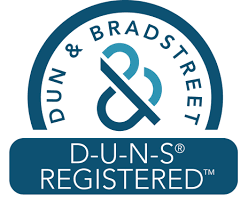CNC machining, in its many forms, is one of the most versatile of all conventional manufacturing processes. The versatility of cnc machining extends to the types of parts that can be made, the material from which they are made, and the volumes produced.
Using conventional CNC milling and turning, parts can be made for medical products very quickly and inexpensively and in unlimited amounts. These benefits come without reducing the precision or accuracy of each component produced. Let’s take a closer look at the top 7 benefits of using CNC machining to make medical products and why you might want to consider this for your next product development project.

Using conventional CNC milling and turning, parts can be made for medical products very quickly and inexpensively and in unlimited amounts. Let’s take a closer look at the top 7 benefits of using CNC machining to make medical products and why you might want to consider this for your next product development project.

1. CNC machining requires no fixed tooling
Making and machining a dedicated mold tool, such as would be used for plastic injection molding, can take an additional 3 to 4 weeks of production lead time. This includes not only making the mold but also approving samples and optimizing the molding parameters. This added production time and development cost are perfectly reasonable for larger orders. But for small production runs or even for single one-off parts, it’s hard to beat CNC machining for quick turnaround and minimal investment. In the medical industry parts often need to be made quickly and in small quantities. CNC machining enables parts to be produced without the need for specialized tools that may increase production time. Even without tooling CNC machines offers great quality and accuracy.
2. There are no volume restrictions for medical devices
Once a digital CAD file has been made, a cutting program can be generated from that file very quickly. This coding program can then be used to make a single part or any multiple parts with the highest precision and accuracy at the push of a button. This is a great advantage when making single-use or one-off custom parts which is often the case for highly specialized medical devices, appliances, equipment, prosthetics, and other medical or surgical products. Other processes demand minimum order volumes in order to secure the necessary raw materials, which might make some projects unfeasible. With CNC machining no minimum order is necessary.
3. CNC machining works with many materials
This means that, with a few exceptions, standard CNC machines are capable of working with the most common rigid materials used for medical or surgical appliances, tools, and end-use parts. These materials include stainless and mild steel, aluminum, titanium, and engineering-grade plastics like PEEK.
4. CNC machining produces parts and components fast
Depending upon the complexity of the medical part, transitioning from a digital CAD file to a finished product might take only a matter of hours with CNC machining. In the medical industry, there are often medical emergencies where it’s difficult or impossible to predict in advance the kinds of parts or medical components that might be needed at a moment’s notice. This has recently been clearly demonstrated by the sudden need for personal protective equipment brought on by the rapid and unexpected spread of the novel coronavirus. In these medical emergencies, CNC machining can be used to provide quality parts in a short amount of time.
5. CNC machines can be portable and local

Large industrial CNC machines take up a lot of floor space in a factory when manufacturing is highly centralized, and there are sometimes very good reasons for doing this.
But there are also small portable CNC machines that can fit on a desktop. Such CNC machines may be a bit limited in capacity, but they are more than capable of making and machining simple but precise parts, appliances, fixtures, jigs, and other needed medical or surgical components. These devices eliminate the need to search for the nearest production facility and provide immense value in the medical industry. Their small size and modest power requirements for production are ideal for medical emergencies or isolated rural communities that may not have access to full-service hospitals.
6. CNC machined parts have tight tolerances
Many sophisticated medical devices require very tight tolerances. This is easy to achieve on quality CNC machines. Surface finishes typically require very little post-processing. This again saves time and money, but that is not the critical issue. The important point about medical devices, products, and related equipment is that they must be fit for purpose and any deviation in specifications could spell disaster in the medical field. The precision and accuracy of digital machining reduce this risk to a minimum and produces quality parts.
7. Digital CAD files are portable and flexible
Digital manufacturing and machining allow product designers, medical specialists, and manufacturing professionals to transfer digital programs from one location to another quickly and easily. This technology greatly enhances the ability of CNC machining to create high-quality specialty medical devices and equipment solutions where and when they are needed most without regard to geographical location. This component of CNC machining is very valuable, especially in medical situations when time is of the essence.

Want to know more about our machining and manufacturing services for medical industry products?
Star Rapid is fully compliant with many ISO certifications, including ISO 13485. We stay up-to-date on the latest machining advances and are here to provide you with the highest quality services. Our manufacturing professionals are here to offer a complete design for manufacturing review when you contact us for a free quotation on medical devices or your other critical projects.
If you liked reading this article, we recommend the following content:
Tagged:






